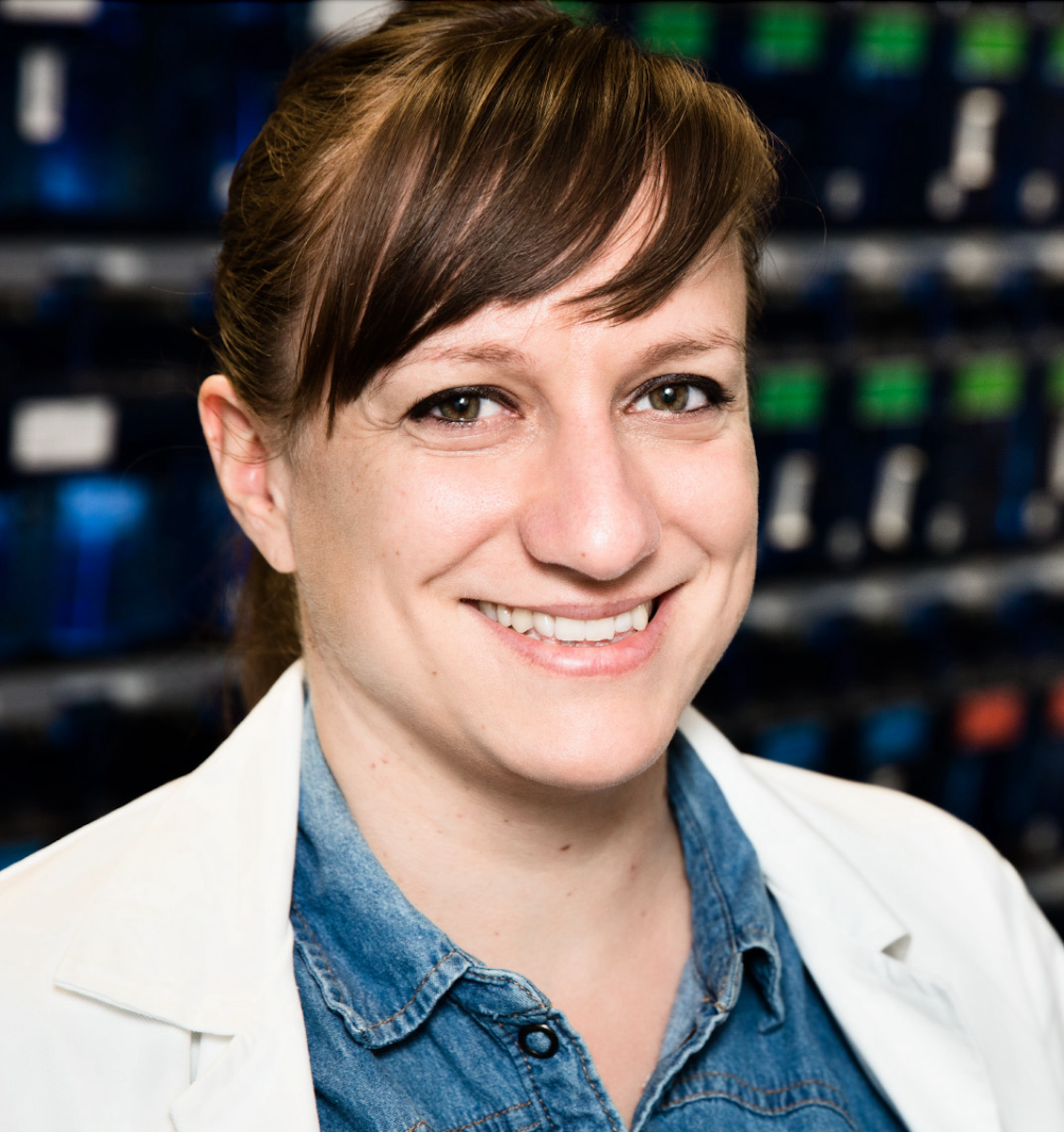
Contact:
Prof. Dr. Daniela Panáková
University Hospital Schleswig-Holstein Kiel
Clinic for Congenital Heart Defects and Pediatric Cardiology
E-Mail: Daniela.Panakova(at)uksh.de
Research areas: heart development, heart regeneration, congenital heart disease
Prof. Daniela Panáková is a DZHK Professor for Cardiac Genetics of Congenital Structural Heart Disease at the University Hospital Schleswig-Holstein, Campus Kiel, Faculty of Medicine of the Christian Albrechts University in Kiel. Her main goal is to unravel the molecular and cellular mechanisms contributing to Congenital Heart Disease using the zebrafish model for improved patient care.
Research Focus
Congenital Heart Disease (CHD) affects approximately 0,8% of newborns and remains the leading cause of infant mortality. Although genetics and environmental factors are recognized as important underlying factors, a considerable fraction of CHD cases remain unexplained. Moreover, the fundamental mechanisms involved in the emergence of congenital birth defects remain incompletely understood. Prof. Panáková's goal as the DZHK Professor is to unravel the molecular and cellular mechanisms contributing to structural CHD for improved gene/variant prioritization and patient/disease stratification. Together with her colleagues in the clinic and human genetic departments, they aim to individualize the treatment and management of CHD patients according to their genetic and epigenetic predispositions and develop therapies that mitigate cardiac or multiorgan maladaptation using zebrafish as a personalized medicine disease model.
Prof. Panáková's long-standing research interest addresses how developmental signaling and physiology regulate cellular responses including cell fate and differentiation. Her research focuses on organ formation and tissue regeneration. It combines multiple integrative approaches to provide the systems view of the interactions between developmental signaling with the focus on the Wnt pathway and mechanical and electrical cues in cell and zebrafish models. Her ultimate goal is to provide insights into the pathophysiology of cardiovascular diseases, but on a broader scale, the gained insights have implications for cell, tissue, and organ biology.
Teaching, training, and mentoring the new generation of scientists forms a great part of her endeavors. She has served as a Confidential Advisor for Ph.D. and Postdoc body at the MDC Berlin, she was elected to the Gender Equality and Equal Opportunity team at the MDC Berlin, and she serves as a mentor for a number of mentoring programs, including the DZHK Mentoring Program.
Major achievements and awards
- Promotion of Women Scientists Award: Excellence Programme of DZHK (2021)
- Marie Curie Career Integration Grant, EU-Marie Skłodowska-Curie Action (2012)
- Helmholtz Young Investigator Program (2010)
- BRI (Biomedical Research Institute at BWH) Research Excellence Award (2009)
- Human Frontier Science Program (HFSP), Long-Term Fellowship (2008-2011)
Key Publications
Kourpa A, Schulz A, Mangelsen E, Kaiser-Graf D, Koppers N, Stoll M, Rothe M, Bader M, Purfürst B, Kunz S, Gladytz T, Niendorf T, Bachmann S, Mutig K, Bolbrinker J, Panáková D, Kreutz R. Studies in Zebrafish and Rat models support dual blockade of EP2 and EP4 (Prostaglandin E2 Receptors Type 2 and 4) for renoprotection in glomerular hyperfiltration and albuminuria. Hypertension. 80(4): 771-782
Kourpa A, Kaiser-Graf D, Sporbert A, Philippe A, Catar R, Rothe M, Mangelsen E, Schulz, A, Bolbrinker J, Kreutz R, Panáková D. 15-keto-Prostaglandin E2 exhibits bioactive role by modulating glomerular cytoarchitecture though EP2/EP4 receptors. Life Sciences. 310: 121114. PMID: 36273629
Hu B, Lelek S, Spanjaard B, El-Sammak H, Guedes Simões M, Mintcheva J, Aliee H, Schäfer R, Meyer AM, Theis F, Stainier DYR, Panáková D, Junker JP. Origin and function of activated fibroblast states during zebrafish heart regeneration. Nat Genet. 54(8):1227-1237, PMID: 35864193
Schulz A, Müller NV, van de Lest NA, Eisenreich A, Schmidbauer M, Barysenka A, Purfürst B, Sporbert A, Lorenzen T, Meyer AM, Herlan L, Witten A, Rühle F, Zhou W, de Heer E, Scharpfenecker M, Panáková D, Stoll M, Kreutz R. Analysis of the genomic architecture of a complex trait locus in hypertensive rat models links Tmem63c to kidney damage. Elife, e42068. PMID: 30900988
Cantù C, Felker A, Zimmerli D, Prummel KD, Cabello EM, Chiavacci E, Méndez-Acevedo KM, Kirchgeorg L, Burger S, Ripoll J, Valenta T, Hausmann G, Vilain N, Aguet M, Burger A, Panáková D, Basler K, and Mosimann C. Mutations in Bcl9 and Pygo genes cause congenital heart defects by tissue-specific perturbation of Wnt/b-catenin signaling. Genes Dev, 32 (21-22). PMID: 30366904
Merks AM, Swinarski M, Meyer AM, Müller NV, Özcan I, Donat S, Burger A, Gilbert S, Mosimann C, Abdelilah-Seyfried S, Panáková D. Planar cell polarity signalling coordinates heart tube remodelling through tissue-scale polarisation of actomyosin activity. Nat Commun 9, 2161. PMID: 29867082
Felker A, Prummel KD, Merks AM, Mickoleit M, Brombacher EC, Huisken J, Panáková D, Mosimann C. Continuous addition of progenitors forms the cardiac ventricle in zebrafish. Nat Commun 9, 2001. PMID: 29784942
Mosimann C, Panáková D, Werdich AA, Musso G, Burger A, Lawson KL, Carr LA, Nevis KR, Sabeh MK, Zhou Y, Davidson AJ, DiBiase A, Burns CE, Burns CG, MacRae CA, Zon LI. Chamber identity programs drive early functional partitioning of the heart. Nat Commun 6, 8146. PMID: 26306682
Rharass T, Lemcke H, Lantow M, Kuznetsov SA, Weiss DG, Panáková D. Ca2+-mediated mitochondrial reactive oxygen species metabolism augments Wnt/β-catenin pathway activation to facilitate cell differentiation. J Biol Chem 289, 27937–27951. PMID: 25124032
Panáková D, Werdich AA, MacRae CA. Wnt11 patterns a myocardial electrical gradient through regulation of the L-type Ca(2+) channel. Nature 466, 874–878. PMID: 20657579
